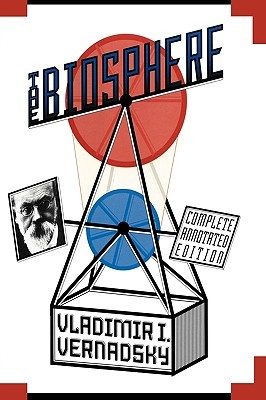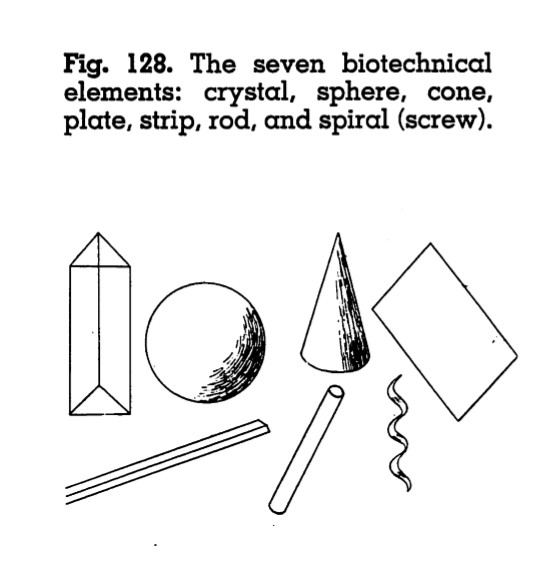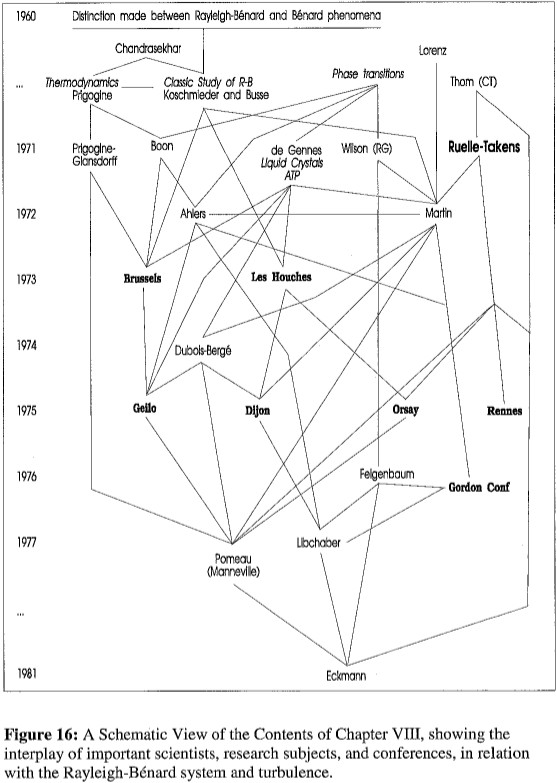Vladimir Vernadsky: The Biosphere (1926–) [RU, ES, EN]
Filed under book | Tags: · animal, atmosphere, biochemistry, biology, biosphere, chemistry, climate, earth, energy, environment, geochemistry, geology, land, life, light, ocean, plants, science, space, sun, time, water, weather

“First published in 1926 but long neglected in the West, Vladimir I. Vernadsky’s The Biosphere revolutionized our view of Earth. Vernadsky teaches us that life has been the transforming geological force on our planet. He illuminates the difference between an inanimate, mineralogical view of Earth’s history, and an endlessly dynamic picture of Earth as the domain and product of living matter to a degree still poorly understood.
The 1998 edition, which is the first English translation of the entire text, features contributions by Mark A. S. McMenamin, Professor of Geology at Mount Holyoke College, who has written extensive annotations to explain the structure of Vernadsky’s arguments and their modern relevance, and Jacques Grinevald, an authority on the idea of the biosphere, who penned an introduction that places the book in historical context.”
English edition
Foreword by Lynn Margulis, Mauro Ceruti, Stjepko Golubic, Ricardo Guerrero, Nubuo Ikeda, Natsuki Ikezawa, Wolfgang E. Krumbein, Andrei Lapo, Antonio Lazcano, David Suzuki, Crispin Tickell, Malcolm Walter, Peter Westbroek
Introduction by Jacques Grinevald
Translated by David B. Langmuir
Revised and Annotated by Mark A.S. McMenamin
Publisher Copernicus Books, 1998
A Peter N. Nevraumont book
ISBN 9781461272649
192 pages
Commentary on the concept (Alexej M. Ghilarov, The Quarterly Review of Biology, 1995)
Commentary on the translations (Mercè Piqueras, International Microbiology, 1998)
Publisher (EN)
Biosfera i noosfera (Russian, 1926/1989)
La Biosfera (Spanish, trans. María Victoria López Paño and Luis Gutiérrez Andrés, 1997)
The Biosphere (English, trans. David B. Langmuir, 1998)
Oliver I.A. Botar: Prolegomena to the Study of Biomorphic Modernism: Biocentrism, László Moholy-Nagy’s “New Vision” and Ernő Kállai’s Bioromantik (1998)
Filed under thesis | Tags: · aesthetics, art history, avant-garde, biocentrism, biology, constructivism, modernism, nature, photography, science

“Focusing on Weimar Germany, I ground the study of biomorphic Modernism in Ernő Kállai‘s 1932 identification of a trend he termed Bioromantik. Kállai wrote from a biocentric position, an amalgam of Nature Romanticism and biologism espoused by Nietzsche, Ernst Haeckel, Ludwig Klages, Oswald Spengler, Raoul Francé and Hans Prinzhorn in the early 20th century, here established as a politically-charged category of intellectual history. Kállai characterized Bioromantik as art, the imagery, forms or themes of which express Monist, Neo-Vitalist, lebensphilosophisch and Organicist, i.e. biocentric concepts such as the life-force, creative/destructive aspects of nature, and our unity with it. The work of artists he cited (Arp, Klee, Moore, Kandinsky, Ernst, etc. ) is biomorphic Modernist in style. Kállai’s conception derives from his realization of the similarity between biomorphic art and scientific photography, here termed the ‘naturamorphic analogy’, a topos traceable to Kandinsky’s pre-war writing.
Probably inspired by Walter Benjamin’s review of Karl Blossfeldt’s photographs, Kállai’s epiphany occurred in the Moholy-Nagy-curated ‘Raum-1’ of the 1929 Film und Foto show in Stuttgart; in effect a three-dimensional statement of his ‘New Vision’ that aestheticized scientific photography, and that — like Moholy’s entire pedagogical project — I show to be rooted in biocentrism. Thus, the profound effect biocentric thinkers had on the milieux Moholy emerged from is discussed: The fin-de-siècle Haeckelian tradition of normative aestheticized scientific imagery is shown to underlie New Vision; the biocentric wing of the Jugendbewegung is revealed as a source of Moholy’s biocentric pedagogy; inspired by Francé, ‘Biocentric Constructivism’ is identified as a discourse engaged in by Mies, Moholy, Lissitzky, Hausmann and Meyer; the Bauhaus, with attention to Gropius, Klee, Kandinsky, Schlemmer and Meyer, is recast as a locus of biocentric ideas.
Like others, Kállai proposed a ‘psychobiological’ explanation for the naturamorphic analogy: the artists’ identity with nature and their consequent intuitive imaging of its unseen aspects also revealed by science. I show how the aestheticization of scientific images effected by New Vision enabled Modernist artists and critics to be exposed to such imagery — an historical alternative to the essentialist explanation that constitutes a basis for research on biomorphic Modernist art.” (Abstract)
Department of the History of Art, University of Toronto, 1998
762 pages
David Aubin: A Cultural History of Catastrophes and Chaos: Around the Institut des Hautes Études Scientifiques, France 1958-1980 (1998)
Filed under thesis | Tags: · biology, catastrophe theory, chaos theory, history of mathematics, history of science, linguistics, mathematics, oulipo, physics, science, semiotics, structuralism, turbulence
“This is the story of a group of scientists who, in the local context of the Institut des Hautes Études Scientifiques (IHÉS), France, contributed to the elaboration of catastrophe theory and deterministic chaos theory. Starting with a study of the role of Bourbaki’s mathematics on the French intellectual scene (and especially with respect to structuralism), this dissertation examines the resources from topology, embryology, and linguistics used by René Thom to construct catastrophe theory.
It describes the foundation of the IHÉS by Léon Motchane in 1958 and the ideology of fundamental research that shaped it. It reviews the history of structural stability for differential equations, focusing on the work of Aleksandr Andronov and Solomon Lefschetz, among others, and the synthesis achieved in the 1960s by Stephen Smale at the University of California, Berkeley. These mathematical developments were used by Thom to develop new modeling practices. The IHÉS, which welcomed topologists such as E. Christopher Zeeman and Ralph Abraham, played a role in developing modeling practices based on recent advances in topology. A physics professor at the IHÉS, David Ruelle, together with Dutch mathematician Floris Takens, adapted the modeling practices of these ‘applied topologists’ and proposed a mechanism for the onset of turbulence, thereby introducing the concept of strange attractors. Looking at the history of fluid mechanics, I argue that Ruelle’s work displaced earlier emphases on fundamental laws, like the Navier-Stokes equations, and focused on the modes of representation rather than representations themselves. A certain Bourbakization of physics and the advent of the computer shaped this evolution.
Finally, focusing on convention, and taking the Rayleigh-Bénard system as a boundary system, various communities’ responses to the Ruelle-Takens model are examined, in particular hydrodynamic stability theorists, phase transition physicists and Pierre-Gilles de Gennes’s group, and chemical physicists orbiting Ilya Prigogine. Prior interest in developing interdisciplinary approaches for the study of turbulence helped the adaptation of a dynamical systems approach for the study of natural phenomena, greatly inspired by the work of Smale, Thom, and Ruelle.” (Abstract)
Ph. D. thesis
Princeton University
782 pages
single PDF (final section “Sources and Bibliography” missing; no OCR)
PDF chapters (from the author’s website)


